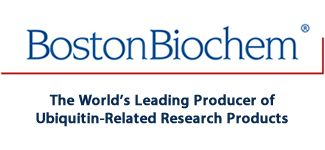
Recombinant Human His6-Ubiquitin Mutant with K63 only, CF Summary
Product Datasheets
Carrier Free
CF stands for Carrier Free (CF). We typically add Bovine Serum Albumin (BSA) as a carrier protein to our recombinant proteins.Adding a carrier protein enhances protein stability, increases shelf-life, and allows the recombinant protein to be stored at a more dilute concentration.The carrier free version does not contain BSA.
In general, we advise purchasing the recombinant protein with BSA for use in cell or tissue culture, or as an ELISA standard.In contrast, the carrier free protein is recommended for applications, in which the presence of BSA could interfere.
UM-HK630
| Formulation | Lyophilized from a solution in HEPES |
| Shipping | The product is shipped at ambient temperature. Upon receipt, store it immediately at the temperature recommended below. |
| Stability & Storage: | Use a manual defrost freezer and avoid repeated freeze-thaw cycles.
|
Reconstitution Calculator
Background: Ubiquitin
Ubiquitin is a 76 amino acid (aa) protein that is ubiquitously expressed in all eukaryotic organisms. Ubiquitin is highly conserved with 96% aa sequence identity shared between human and yeast Ubiquitin, and 100% aa sequence identity shared between human and mouse Ubiquitin (1). In mammals, four Ubiquitin genes encode for two Ubiquitin-ribosomal fusion proteins and two poly-Ubiquitin proteins. Cleavage of the Ubiquitin precursors by deubiquitinating enzymes gives rise to identical Ubiquitin monomers each with a predicted molecular weight of 8.6 kDa. Conjugation of Ubiquitin to target proteins involves the formation of an isopeptide bond between the C-terminal glycine residue of Ubiquitin and a lysine residue in the target protein. This process of conjugation, referred to as ubiquitination or ubiquitylation, is a multi-step process that requires three enzymes: a Ubiquitin-activating (E1) enzyme, a Ubiquitin-conjugating (E2) enzyme, and a Ubiquitin ligase (E3). Ubiquitination is classically recognized as a mechanism to target proteins for degradation and as a result, Ubiquitin was originally named ATP-dependent Proteolysis Factor 1 (APF-1) (2,3). In addition to protein degradation, ubiquitination has been shown to mediate a variety of biological processes such as signal transduction, endocytosis, and post-endocytic sorting (4-7).
This Ubiquitin mutant contains only a single lysine, K63, with all other lysines mutated to arginine. This mutation renders Ubiquitin able to form poly-Ubiquitin chains with other Ubiquitin molecules only via the K63 lysine.
- Sharp, P.M. & W.-H. Li. (1987) Trends Ecol. Evol. 2:328.
- Ciechanover, A. et al. (1980 ) Proc. Natl. Acad. Sci. USA 77:1365.
- Hershko, A. et al. (1980) Proc. Natl. Acad. Sci. USA 77:1783.
- Greene, W. et al. (2012) PLoS Pathog. 8:e1002703.
- Tong, X. et al. (2012) J. Biol. Chem. 287:25280.
- Wei, W. et al. (2004) Nature 428:194.
- Wertz, I.E. et al. (2004) Nature 430:694.
Citations for Recombinant Human His6-Ubiquitin Mutant with K63 only, CF
R&D Systems personnel manually curate a database that contains references using R&D Systems products.The data collected includes not only links to publications in PubMed,but also provides information about sample types, species, and experimental conditions.
3Citations: Showing 1 - 3Filter your results:
Filter by:
- Fine-Tuning of Shh/Gli Signaling Gradient by Non-proteolytic Ubiquitination during Neural PatterningAuthors: P Ma, NN Song, Y Li, Q Zhang, L Zhang, L Zhang, Q Kong, L Ma, X Yang, B Ren, C Li, X Zhao, Y Li, Y Xu, X Gao, YQ Ding, B MaoCell Rep, 2019;28(2):541-553.e4.Species: HumanSample Types: Whole CellsApplications: Bioassay
- Variation in auxin sensing guides AUX/IAA transcriptional repressor ubiquitylation and destructionAuthors: M Winkler, M Niemeyer, A Hellmuth, P Janitza, G Christ, SL Samodelov, V Wilde, P Majovsky, M Trujillo, MD Zurbriggen, W Hoehenwart, M Quint, LIA Calderón VNat Commun, 2017;8(0):15706.Species: N/ASample Types: ProteinApplications: Enzyme Assay
- Proteasome-independent polyubiquitin linkage regulates synapse scaffolding, efficacy, and plasticityAuthors: Q Ma, H Ruan, L Peng, M Zhang, MU Gack, WD YaoProc. Natl. Acad. Sci. U.S.A., 2017;0(0):.Species: HumanSample Types: Cell LysatesApplications: Bioassay
FAQs
No product specific FAQs exist for this product, however you may
View all Proteins and Enzyme FAQsRecombinant Enzymes
Recombinant Human His6-UAF1 Protein, CF
Recombinant Human UCH-L3 Protein, CF
Recombinant Human His6-USP7 Protein, CF
Recombinant Human Isopeptidase T/USP5 Protein, CF
Recombinant Human STAM-1 Protein, CF
Recombinant Human Ubiquitin Activating Enzyme (UBE1), CF
Recombinant Human His6-UBE2N/UBE2V2 Complex Protein, CF
Recombinant Human His6UBE2S Protein, CF
Recombinant Human UBE2K/E2-25K Protein, CF
Reviews for Recombinant Human His6-Ubiquitin Mutant with K63 only, CF
There are currently no reviews for this product. Be the first toreview Recombinant Human His6-Ubiquitin Mutant with K63 only, CF and earn rewards!
Have you used Recombinant Human His6-Ubiquitin Mutant with K63 only, CF?
Submit a review and receive an Amazon gift card.
$25/€18/£15/$25CAN/¥75 Yuan/¥1250 Yen for a review with an image
$10/€7/£6/$10 CAD/¥70 Yuan/¥1110 Yen for a review without an image
ebiomall.com






>
>
>
>
>
>
>
>
>
>
>
>
般基克隆物体直接取基包括面几步骤
提取植物或者物基组DNA(试剂盒)————做PCR需要基扩增(顺利2搞定)——扩增基做酶切——基连接想插入载体面(顺利1-2)——鉴定克隆基
步骤都商品化试剂或者试剂盒 要思路清晰做起快 1-2周能完
没证实情况任何没依据推断都假想空想
现在小弟碰见一个难题,我想克隆一个基因,但是我在NCBI一检索,发现别人只发表了这个基因的DNA全长,但是,CDNA没有发表,也没有发表文章,想请问下,在不知道CDNA的情况下,请问我应该如何做这个基因的克隆???(全基因组也不知道,其他生物没有这种基因)
详见:http://zhidao.baidu.com/question/1831844001436785260.html?fr=iks&word=%B2%A1%B6%BE%B5%C4%B8%B4%D6%C6%D6%DC%C6%DA%B5%C4%B9%FD%B3%CC%3F&ie=gbk









